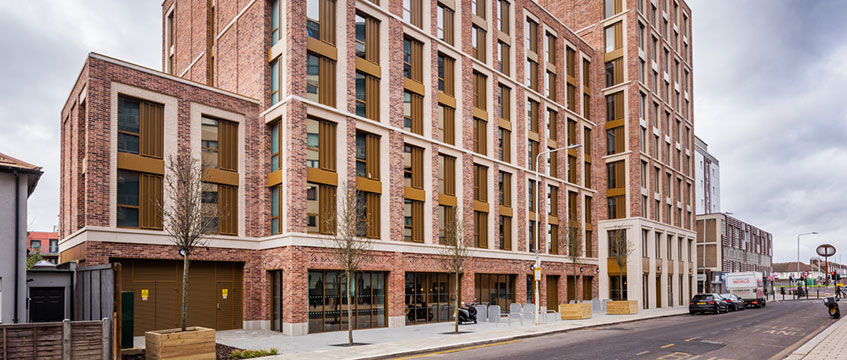Modular housing construction can produce up to 45% less carbon than traditional methods, according to research from the University of Cambridge and Edinburgh Napier University.
The report found that two residential developments, delivered by Tide Construction and comprising 879 homes, saved 28,000 tonnes of embodied carbon emissions during construction.
The schemes were Greystar and Henderson Park’s Ten Degrees on George Street in Croydon, which has towers of 44 and 38 storeys, and Crosstree and Outpost’s 10-storey student block the Valentine in Gants Hill, Redbridge (pictured). Both were designed by HTA Design.
The study showed that these schemes achieved embodied carbon savings of 41% and 45% respectively.
There was also an 80% reduction in vehicle movements and construction waste produced on site, according to the findings.
Researchers highlighted that modular systems require fewer carbon-intensive products such as concrete and steel. They added that modular construction could “radically reduce” the carbon footprint associated with the government’s ambition to build 300,000 better-quality homes.

Tim Forman, senior research associate at the University of Cambridge, said: “Buildings are responsible for approximately 40% of global energy-related carbon emissions, and there is an urgent need to reduce the carbon intensity of construction and buildings in use.
“As buildings become more energy efficient in operation, reducing the carbon associated with construction – including the production and transportation of materials and site activities – and their end of life is becoming increasingly significant.”
The report comes after House by Urban Splash – the developer’s modular housing joint venture with Japanese group Sekisui – crashed into administration last month.
To send feedback, e-mail akanksha.soni@eg.co.uk or tweet @EGPropertyNews











